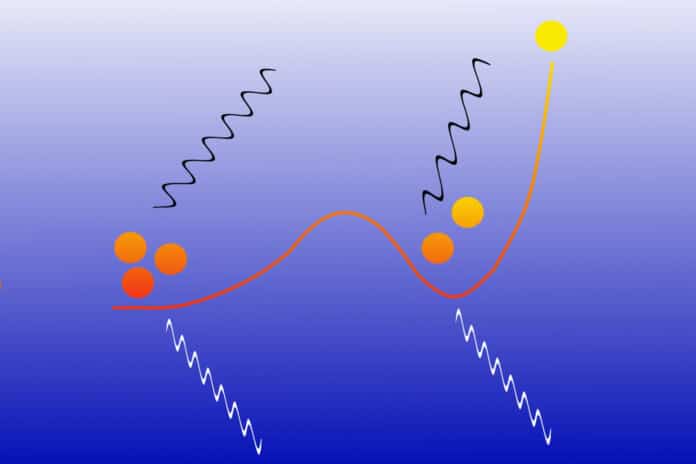Hydrogen- the most common element in the universe- determines the properties of stars and planets and is crucial for life on Earth. Despite its fairly simple structure (a hydrogen atom consists of only one electron and one proton), many features remain unknown.
A team of scientists from Christian-Albrechts-Universität zu Kiel (CAU) and the Helmholtz-Zentrum Dresden-Rossendorf (HZDR) has predicted another unexpected property of hydrogen: When compressed under high pressure, the element exhibits unusual “roton-like behavior.”
This is manifested, for example, by the peculiar scattering of X-ray radiation by concentrated hydrogen. X-ray photons transmit energy to electrons during the process, which increases as momentum is exchanged. However, energy can also decrease in dense hydrogen as momentum transfer increases.
This was previously only observed in radically different systems, such as strange so-called Bose fluids near absolute zero. Superfluid liquids, for example, exhibit quantum phenomena that traditional statistical mechanics cannot describe.
Professor Michael Bonitz from the Institute for Theoretical Physics and Astrophysics at CAU said, “This property of hydrogen is caused by the electrons, which are not bound in atoms.”
Dr. Tobias Dornheim from the HZDR describes the behavior of the electrons” “If hydrogen is irradiated with X-ray photons of a certain wavelength, electrons can come unusually close to each other and even form pairs, although they repel each other.”
The research team used computer simulations to determine which parameters of this roton behavior should be detectable. It is now up to experimental physics specialists to prove it in practice.
Journal Reference:
- Paul Hamann, Linda Kordts, Alexey Filinov, Michael Bonitz, Tobias Dornheim, and Jan Vorberger. Prediction of a roton-type feature in warm dense hydrogen. Physical Review Research. DOI: 10.1103/PhysRevResearch.5.033039
